Introduction to Ceiling Fan Motors
Ceiling fan motors are a crucial component in the functionality and efficiency of ceiling fans. They are responsible for converting electrical energy into mechanical energy, which drives the blades of the fan and produces airflow in the space. Understanding the role of ceiling fan motors is essential for anyone looking to purchase, install, or maintain a ceiling fan, as the quality of the motor significantly impacts the fan’s performance, durability, and energy consumption.
At the heart of a ceiling fan motor, there are several key components, including the rotor, stator, and windings. The rotor is the rotating part of the motor, while the stator remains stationary and surrounds the rotor. The windings are coils of wire that create a magnetic field when an electric current passes through them, ensuring the rotor spins effectively. This interplay of components is what enables the fan to produce a consistent and reliable airflow while operating quietly.
Ceiling fan motors are generally classified into two main types: AC (alternating current) motors and DC (direct current) motors. AC motors are more traditional and are commonly found in older fan models, while DC motors have gained popularity due to their energy efficiency and lower operational costs. DC motors also provide more speed options and quieter operation compared to their AC counterparts. As such, the choice of motor not only affects the noise level and energy usage but also influences the overall cooling power of the fan.
When selecting a ceiling fan, it is important to consider the quality of the motor. High-quality motors tend to offer enhanced longevity, improved energy efficiency, and consistent performance over time. Therefore, understanding the mechanics of ceiling fan motors can help consumers make informed decisions, ensuring they choose a fan that meets their needs and expectations.
Types of Ceiling Fan Motors
Ceiling fan motors are integral to the performance and efficiency of the fans, and choosing the right type can enhance indoor air circulation significantly. The most common types of ceiling fan motors include AC motors, DC motors, and shaded pole motors, each offering distinct benefits and drawbacks.
AC motors, or alternating current motors, are traditionally used in ceiling fans. They are durable and often more affordable than their counterparts. AC motors generally produce more noise during operation, which may concern users seeking a quieter environment. However, they provide a consistent fan speed and are suitable for larger spaces, making them a popular choice for high-traffic areas.
In contrast, DC motors, or direct current motors, are becoming increasingly prevalent in modern ceiling fans. These motors are known for their energy efficiency, often using up to 70% less energy than AC motors. Additionally, DC motors operate at lower noise levels, providing a peaceful atmosphere in bedrooms or home offices. They also come with multiple speed settings, allowing users to adjust the airflow according to their preferences. The higher initial investment associated with DC motors may be offset by their energy savings over time.
Shaded pole motors are another type found in ceiling fans, particularly in lower-end models. These motors are simple in design and cost-effective but offer limited efficiency and power. Shaded pole motors are typically used in smaller, lightweight fans and are suitable for areas that do not require significant airflow, such as small rooms or linen closets.
Overall, understanding the differences between AC motors, DC motors, and shaded pole motors can aid consumers in making informed decisions regarding ceiling fan purchases. Each type affects fan efficiency, noise levels, and energy consumption, and matching the motor type to specific needs can significantly enhance user experience.
How to Choose the Right Ceiling Fan Motor
Selecting the appropriate ceiling fan motor is essential in ensuring optimal performance and efficiency. One of the initial factors to consider is the size of the room where the fan will be installed. Larger rooms require fans with more powerful motors to provide adequate airflow, while smaller spaces can benefit from less powerful models. Generally, a fan with a blade span of 50 to 60 inches is suitable for rooms up to 400 square feet, while fans with 44-inch blades are ideal for spaces of around 225 square feet.
Another crucial consideration involves the desired airflow. Different fans come with distinct airflow ratings, often measured in cubic feet per minute (CFM). When choosing a ceiling fan motor, it’s imperative to select one with a CFM rating that matches your preferences for comfort. For instance, a higher CFM is beneficial for larger areas or for users who prefer a more robust breeze, while lower CFM fans can suit intimate settings, promoting a gentler air circulation.
Energy efficiency is also a significant factor, especially for those looking to reduce electricity expenses. Look for models that are ENERGY STAR certified, which signify that the fan consumes less energy while delivering strong performance. Additionally, consider the noise levels produced by the motor; nobody wants a ceiling fan that disrupts the serenity of their environment. Paying attention to a fan’s specified noise rating can help avoid unwanted distraction.
Lastly, be sure to match the motor type with its intended use. Indoor ceiling fan motors are typically designed for quieter operation, while outdoor models must withstand humidity and varying weather conditions. Some reliable brands, such as Hunter, Casablanca, and Emerson, offer a range of ceiling fans with superior motors suited for various needs, ensuring that homeowners can find the perfect fit for their space.
Common Issues with Ceiling Fan Motors
Ceiling fan motors are essential components that facilitate the functioning of these popular household appliances. However, like any mechanical device, they can encounter several issues over time. One common problem is motor overheating. This often occurs due to prolonged usage or dust accumulation within the motor housing. If a fan ceases to operate effectively or feels unusually hot to the touch, it may indicate that the motor is working harder than it should. Regular maintenance, such as cleaning the motor and ensuring proper lubrication, can help mitigate this problem.
Unusual noises are another sign that a ceiling fan motor may require attention. These sounds can range from a faint hum to more alarming grinding or rattling noises. The causes may vary, from loose screws and fittings to bearing wear. Identifying the source of these noises can be crucial for effective troubleshooting. Tightening loose components and replacing worn bearings can often restore quiet operation.
Insufficient airflow is a prevalent concern among ceiling fan users. This issue can sometimes be traced back to the motor’s performance. A fan should ideally distribute air evenly throughout the room, and a decrease in airflow can result from a failing motor. Checking for obstructions, ensuring that blades are clean and unbent, and verifying that the motor is in good working order can often resolve the problem.
Lastly, recognizing the signs of motor fatigue is essential for maintaining a functional ceiling fan. Symptoms can include sporadic operation or flickering lights associated with the fan. Regular inspections and maintenance can extend the life of the motor and enhance performance. Simple actions like cleaning and lubricating parts, along with monitoring for any emerging issues, empower homeowners to troubleshoot and maintain their ceiling fans effectively.
The Future of Ceiling Fan Motor Technology
The advancement of ceiling fan motor technology is poised to revolutionize consumer expectations in both functionality and efficiency. With home automation on the rise, smart ceiling fan motors are becoming increasingly prevalent. These innovative systems offer remote control capabilities through smartphone applications, enabling users to adjust settings such as speed and lighting with ease. Many smart motors are compatible with voice-activated services, allowing hands-free adjustments and integration with other smart home devices, enhancing user convenience and comfort.
Energy efficiency remains a critical focus in the development of ceiling fan motors. Manufacturers are now producing models equipped with brushless direct current (BLDC) motors that consume significantly less energy than traditional AC motors. Such improvements not only reduce electricity costs but also contribute to greater environmental sustainability. The use of energy-efficient technologies, alongside advancements in motor design, helps ensure that consumers can enjoy a comfortable indoor climate without contributing excessively to their carbon footprint. Moreover, eco-friendly designs are gaining traction, utilizing recyclable materials and sustainable manufacturing processes.
Another emerging trend in ceiling fan motor technology is the incorporation of innovative airflow designs that enhance overall performance while minimizing noise. Many consumers seek quiet operation, particularly in living spaces like bedrooms and offices. Advancements in motor technology allow for smoother operation with reduced vibration, ensuring a peaceful environment. As these technologies evolve, manufacturers are focused on optimizing airflow patterns to improve circulation, ultimately leading to enhanced cooling and heating efficiency, regardless of seasonal shifts.
As we look ahead, the future of ceiling fan motor technology holds much promise. The convergence of smart technology, energy efficiency, and eco-friendly practices indicates a shift not only in consumer preferences but also in industry standards. With these advancements, consumers can expect improved performance, a more personalized experience, and heightened overall satisfaction from their ceiling fans.
| Ceiling Fan Brand Name | aco, ACTIVA, Aervinten, AGE, AIRDEC, AIRELEC, Airhill, AKSHARA FAN, Almo, ALVIS, AMJ, Anchor By Panasonic, Aparna, Astra, Athots, Atomberg, ATUL, BAJAJ, befunky, BERLIA STEELS PVT LTD, Bevel, Bison, Blue Me, blue sun, BlueBerry's, Brighty, Candes, CG, Chief Marshal, cojo, Cosas, Cospex, Crompton, dakshrup, DAWAR, DIGISMART, DRUMSTONE, DV NOVAKING, EAGLE, ecotejas, Elevea, Elixxeton US, Emflux, Enamic UK, Engarc, Eskon, Eurostar, EVEREST, fest forever, Flipkart SmartBuy, FOUR STAR, GESTOR, GM, good choice, GRANTON, Halcyon, HANEUL, HANS LIGHTINGS, HARMAN INDUSTRIES, HAVELLS, HAWAFANS, Herrricane, Hi Choice, Hindware, IMPEX, Indigo, INNO ONE, Kanishka, Kenstar, kenvi us, Khaitan, Kimatsu, KOI, KUHL, KWW, kysa, Lalson's, Lazer, LionBolt, Longway, LONGWINGS, LUKER, LUMINOUS, Luton, luxer, MAKE LIFE BETTER, MARC, Max Speed, Maxotech, MAYA, MinMAX, MODI, Mokshi, Moonstruck, MOVIE STARS, NAVDEVI, Nex, oceco, OMEGA'S, OMEN, oremate+, oreole, Orient Electric, ORPAT, Orzinpro, OSTN, ottomate, Panasonic, Paras Green, Polar, Polycab, PROLIFE, QUALX, Raptas, RediGo, Relaxo, Revolta, Rhobos, RPM, RPM Airtech, Sameer, Sampri, Sansui, SATYA SUNDER, saveguard, SHATAK, SHIFY, silver king, Singer, sm luxury, Smuf, STANDARD, STAR JIVA, Stardom, STARSHINE, Summercool, SUMMERKING, Sun Flame, Sunflame, SUNGOLD, suniore, Superfan, SURYA, Sword, TechKing, THERMO KING, THERMOCOOL, TIFOZ, ULTICA, UltinoPro, UNIFAN, Urja Enterprise, USHA, V-Guard, vandana, ventum, Venus, VG, Vilaxo, vindian, VISRA, Voltcare, VRS, Willett, Xpert, ZENTAX, zigma, ZORIX, Zunpulse, ZunVolt |
|---|---|
| Technician Type | With Technician, Without Technician |
Only logged in customers who have purchased this product may leave a review.
Related products
-
Ceiling Fan Parts
Ceiling Fan Capacitor
Rated 0 out of 5₹234.00Original price was: ₹234.00.₹195.00Current price is: ₹195.00. Select options This product has multiple variants. The options may be chosen on the product page -
Ceiling Fan Parts
Ceiling Fan Remote Control
Rated 0 out of 5₹1,248.00Original price was: ₹1,248.00.₹1,040.00Current price is: ₹1,040.00. Select options This product has multiple variants. The options may be chosen on the product page -
Ceiling Fan Parts
Ceiling Fan Downrod
Rated 0 out of 5₹624.00Original price was: ₹624.00.₹520.00Current price is: ₹520.00. Select options This product has multiple variants. The options may be chosen on the product page -
Ceiling Fan Parts
Ceiling Fan Canopy
Rated 0 out of 5₹234.00Original price was: ₹234.00.₹195.00Current price is: ₹195.00. Select options This product has multiple variants. The options may be chosen on the product page

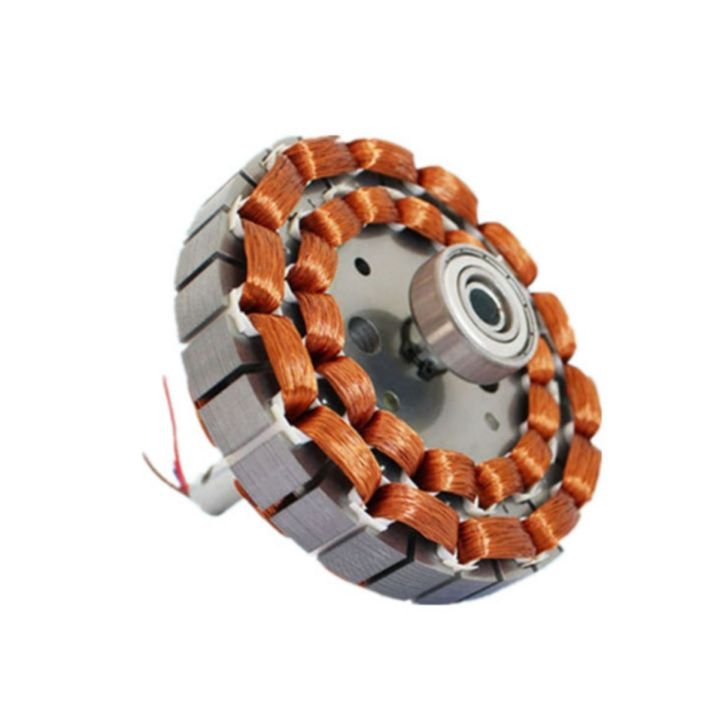
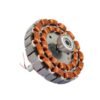
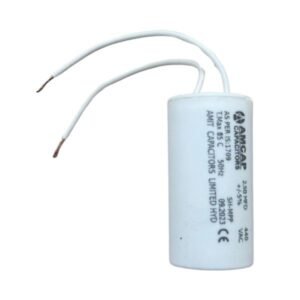
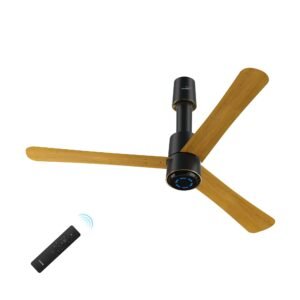
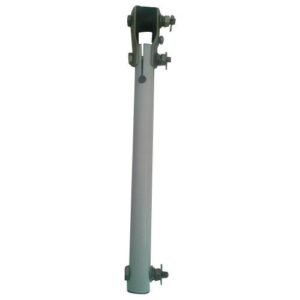
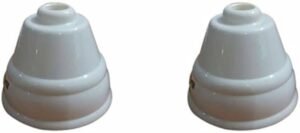
Reviews
There are no reviews yet.